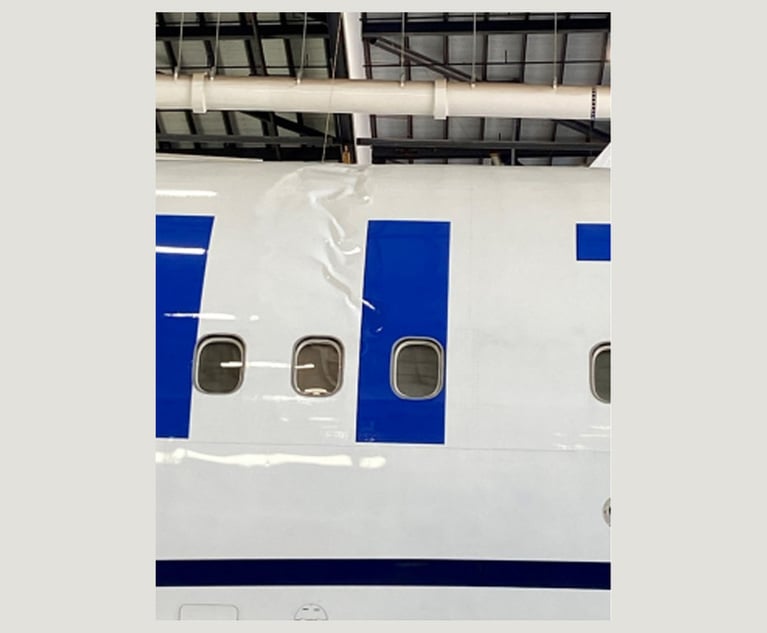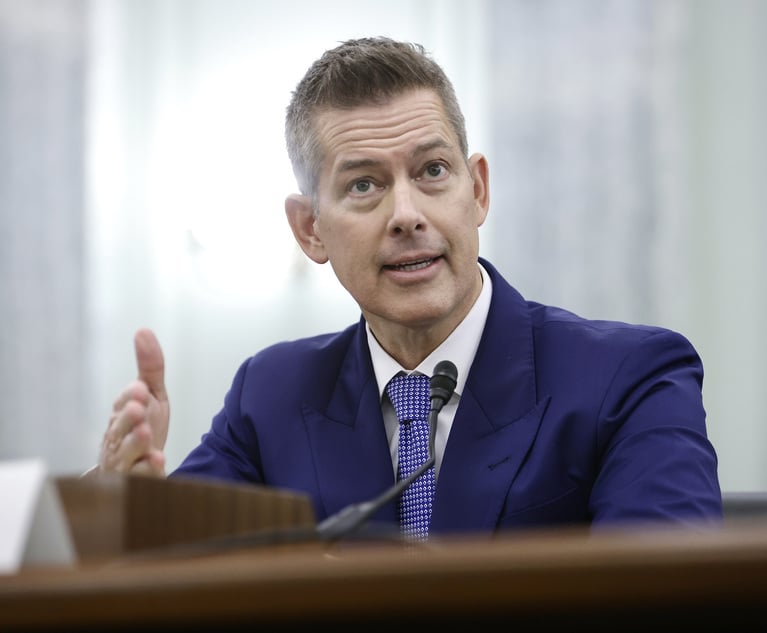Technology: 8 strategies to protect trademarks against new domain names
Now that the Internet Corporation for Assigned Names and Numbers (ICANN) is proceeding on schedule to accept applications for new generic Top Level Domains (gTLDs), trademark owners need to know how to protect their rights.
February 24, 2012 at 04:00 AM
4 minute read
The original version of this story was published on Law.com
Now that the Internet Corporation for Assigned Names and Numbers (ICANN) is proceeding on schedule to accept applications for new generic Top Level Domains (gTLDs)—the extensions to the right of the final dot in an Internet address such as .com and .org—trademark owners need to know how to protect their rights. Following is a description of the procedures ICANN makes available for this purpose.
- Public comments. ICANN will post the public portions of every gTLD application on its website approximately two weeks after the application period ends on April 12. Based on the information, anyone may submit written comments on a pending application and those comments will be considered by an evaluation panel if submitted within 60 days. Pointing out how an applied-for gTLD infringes on, or might be confused with, a registered trademark is an easy way to inform ICANN and the offending applicant that the gTLD should not be awarded.
- Legal rights objection. Formally disputing a gTLD application on this ground must show “the potential use of the applied-for-gTLD by the applicant takes unfair advantage of the distinctive character or the reputation of the objector's registered or unregistered trademark or service mark.”
- Trademark Clearinghouse. Certain protections are afforded trademark holders even after a new gTLD has been added to the Internet. Among them is the Trademark Clearinghouse, “a central repository for information to be authenticated, stored, and disseminated, pertaining to the rights of trademark holders.” It will be operated by a service provider through a contract with ICANN.
- Trademark claims service. Operating in conjunction with the Trademark Clearinghouse, this service allows a mark holder to notify a domain name registrant that the applied-for domain name is an identical match to a trademark listed in the Trademark Clearinghouse. The service “is intended to provide clear notice to the prospective registrant of the scope of the mark holder's rights in order minimize the chilling effect on registrants.”
- Sunrise service. This service allows trademarks to be added to a list of names unavailable for use by other registrants in a particular gTLD. An applicant must demonstrate “ownership of a mark” that is “nationally or regionally registered and for which proof of use … was submitted to, and validated by, the Trademark Clearinghouse” or has been “court-validated” or is “specifically protected by a statute or treaty currently in effect and that was in effect on or before 26 June 2008.”
- Uniform Rapid Suspension System. A remedy for “clear cases of trademark abuse,” the Uniform Rapid Suspention System(URS) permits a domain name to be locked and suspended if found to have been used in bad faith. A complaint must show by clear and convincing evidence that “the registered domain name is identical or confusingly similar to a word mark “for which the Complainant holds a valid national or regional registration and that is in current use” or “validated through court proceedings” or “specifically protected by a statute or treaty in effect at the time the URS complaint is filed.”
- Trademark post-delegation dispute resolution procedure. This procedure allows an alternative form of relief for less obvious cases of trademark infringement. The complainant must prove “by clear and convincing evidence that a registry operator's “affirmative conduct in its operation or use of its gTLD string” either “causes or materially contributes” to the new gTLD string “taking unfair advantage of the distinctive character or the reputation of the complainant's mark” or “impairing the distinctive character or the reputation of the complainant's mark” or “creating a likelihood of confusion with the complainant's mark.”
- Registry restrictions dispute resolution procedure. This remedy is available when a new gTLD owner's violation of the community-based registration restrictions in the registry agreement harms an established institution associated with a defined community.
Strict timing rules govern when these procedures are available and, except for submitting public comments, ICANN's rules also require proof of standing and the payment of costs to make use of them. Deciding which of these procedures may be appropriate will require a careful evaluation of an organization's particular circumstances in light of ICANN's requirements.
This content has been archived. It is available through our partners, LexisNexis® and Bloomberg Law.
To view this content, please continue to their sites.
Not a Lexis Subscriber?
Subscribe Now
Not a Bloomberg Law Subscriber?
Subscribe Now
NOT FOR REPRINT
© 2025 ALM Global, LLC, All Rights Reserved. Request academic re-use from www.copyright.com. All other uses, submit a request to [email protected]. For more information visit Asset & Logo Licensing.
You Might Like
View All


After Botched Landing of United Airlines Boeing 767, Unlikely Plaintiff Sues Carrier
5 minute read
DOT Moves to Roll Back Emissions Rules, Eliminate DEI Programs
Trending Stories
Who Got The Work
J. Brugh Lower of Gibbons has entered an appearance for industrial equipment supplier Devco Corporation in a pending trademark infringement lawsuit. The suit, accusing the defendant of selling knock-off Graco products, was filed Dec. 18 in New Jersey District Court by Rivkin Radler on behalf of Graco Inc. and Graco Minnesota. The case, assigned to U.S. District Judge Zahid N. Quraishi, is 3:24-cv-11294, Graco Inc. et al v. Devco Corporation.
Who Got The Work
Rebecca Maller-Stein and Kent A. Yalowitz of Arnold & Porter Kaye Scholer have entered their appearances for Hanaco Venture Capital and its executives, Lior Prosor and David Frankel, in a pending securities lawsuit. The action, filed on Dec. 24 in New York Southern District Court by Zell, Aron & Co. on behalf of Goldeneye Advisors, accuses the defendants of negligently and fraudulently managing the plaintiff's $1 million investment. The case, assigned to U.S. District Judge Vernon S. Broderick, is 1:24-cv-09918, Goldeneye Advisors, LLC v. Hanaco Venture Capital, Ltd. et al.
Who Got The Work
Attorneys from A&O Shearman has stepped in as defense counsel for Toronto-Dominion Bank and other defendants in a pending securities class action. The suit, filed Dec. 11 in New York Southern District Court by Bleichmar Fonti & Auld, accuses the defendants of concealing the bank's 'pervasive' deficiencies in regards to its compliance with the Bank Secrecy Act and the quality of its anti-money laundering controls. The case, assigned to U.S. District Judge Arun Subramanian, is 1:24-cv-09445, Gonzalez v. The Toronto-Dominion Bank et al.
Who Got The Work
Crown Castle International, a Pennsylvania company providing shared communications infrastructure, has turned to Luke D. Wolf of Gordon Rees Scully Mansukhani to fend off a pending breach-of-contract lawsuit. The court action, filed Nov. 25 in Michigan Eastern District Court by Hooper Hathaway PC on behalf of The Town Residences LLC, accuses Crown Castle of failing to transfer approximately $30,000 in utility payments from T-Mobile in breach of a roof-top lease and assignment agreement. The case, assigned to U.S. District Judge Susan K. Declercq, is 2:24-cv-13131, The Town Residences LLC v. T-Mobile US, Inc. et al.
Who Got The Work
Wilfred P. Coronato and Daniel M. Schwartz of McCarter & English have stepped in as defense counsel to Electrolux Home Products Inc. in a pending product liability lawsuit. The court action, filed Nov. 26 in New York Eastern District Court by Poulos Lopiccolo PC and Nagel Rice LLP on behalf of David Stern, alleges that the defendant's refrigerators’ drawers and shelving repeatedly break and fall apart within months after purchase. The case, assigned to U.S. District Judge Joan M. Azrack, is 2:24-cv-08204, Stern v. Electrolux Home Products, Inc.
Featured Firms
Law Offices of Gary Martin Hays & Associates, P.C.
(470) 294-1674
Law Offices of Mark E. Salomone
(857) 444-6468
Smith & Hassler
(713) 739-1250






